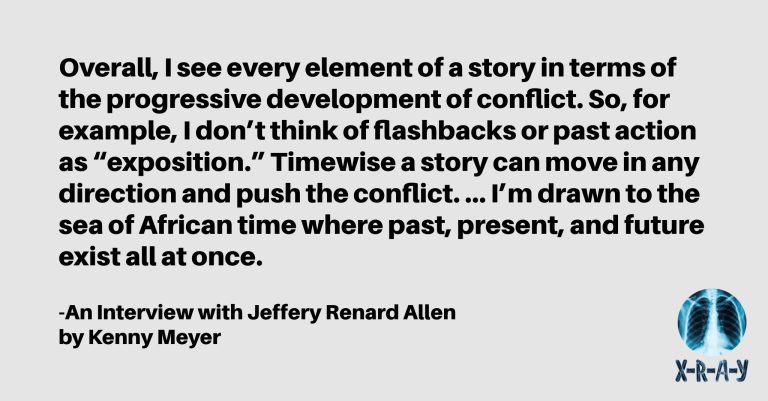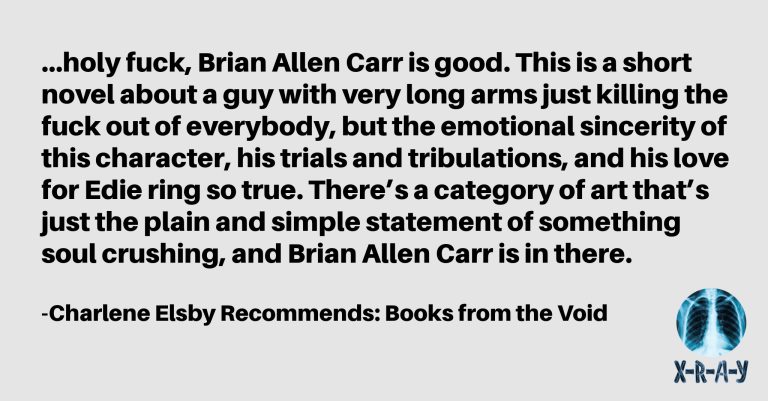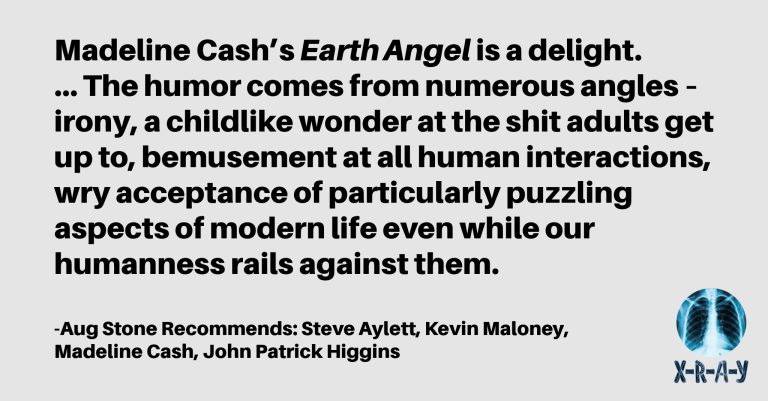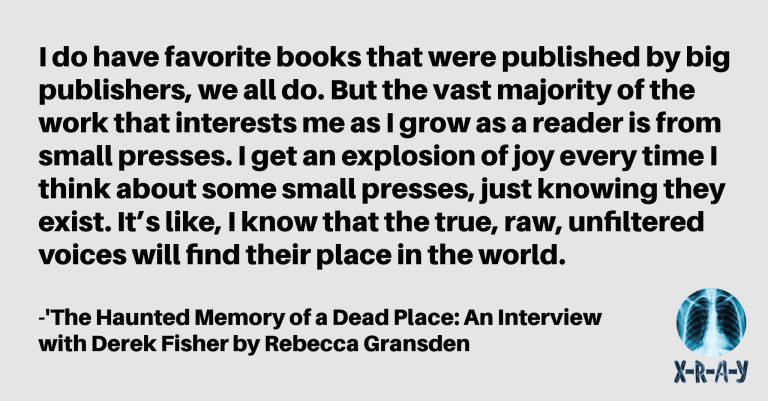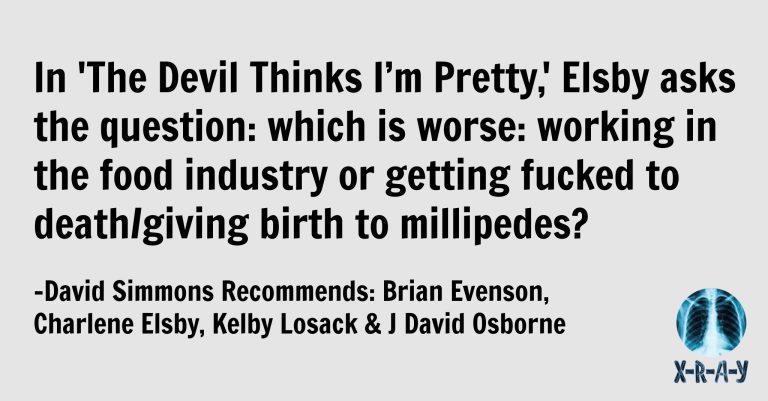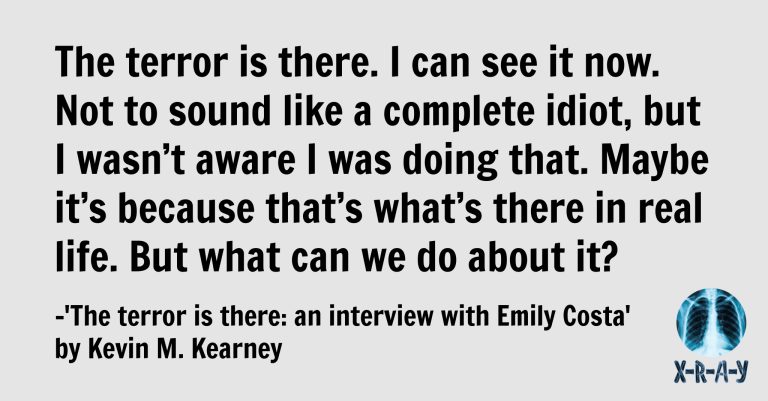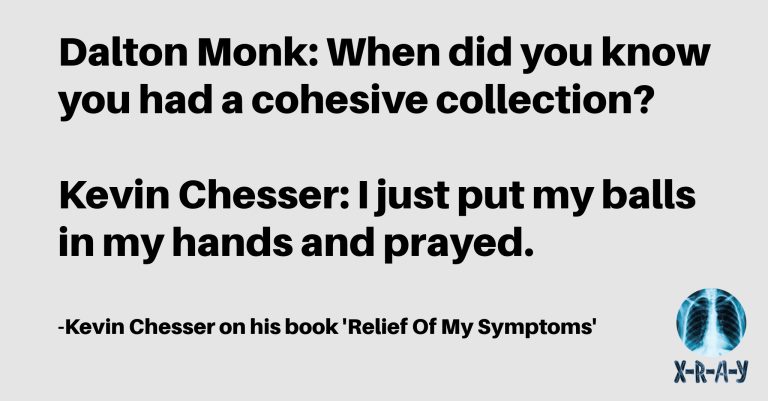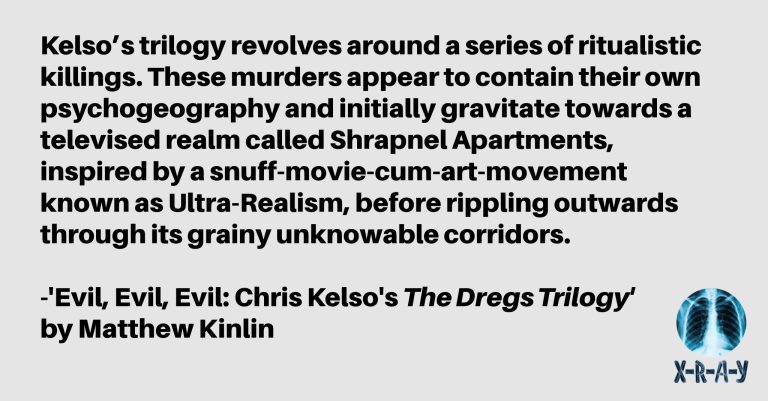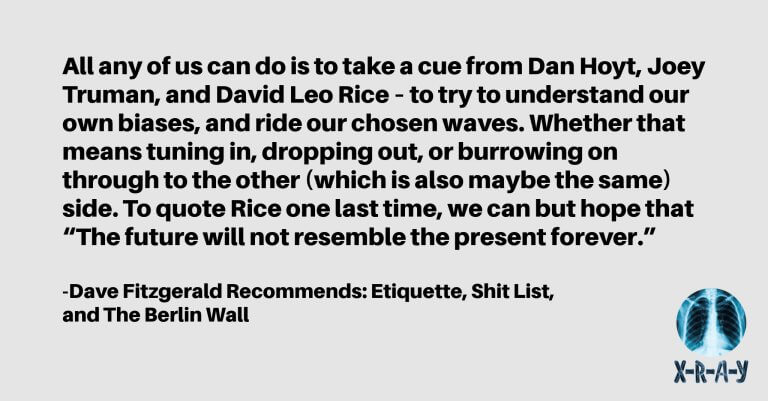
STUFF YOUR FACE WITH SCOTT LAUDATI by Scott Laudati
A special offshoot of our Recommends series, where Scott Laudati enjoys the planet’s best foodstuffs and eateries.New York City, 2010. It’s a 24-hour city. Budweisers are $3. We complain about the rent but a one bedroom is $950. Something big is happening every night in Brooklyn. The So So Glos are playing in a loft and our friend Dasha knows the door code. The garment building hasn’t been annexed by Netflix yet, its basement is rented by an old Marxist who calls it “The CCCP Gallery” and Drew is having his art show there tomorrow. And most importantly, pizza, which we eat on the way into the party and then again on the way home, is $1.50 a slice, and every block has a lit storefront where men are stretching dough and spreading sauce until last call.This city does not exist anymore. I don’t know when exactly it happened. One day the bodega became a grocery store. Then it was demolished entirely and a one story building became a ten floor high rise. The Budweisers don’t come with a shot special anymore, they are just $7 now. And your friends, who you sat in parks with, helped move couches down impossible flights of stairs, they just disappear. Where did they go? Why didn’t anyone invite you? Suddenly you’re all alone with no friends, nowhere you can afford to drink, no galleries to just pop into on your way home, and you ask yourself, “Did I make it all up?”This is a New York City tale as old as time, though. It’s never been a place anyone stayed ’til the end. And if you’re the last one left it means you didn’t get the girl or the memo, and now you’re forty with roommates. But something is happening here that has never happened before. New York City is losing its pizza. It’s losing it to indifference, to age, to a change in taste, but mainly—it’s money. The landlords have chased out everything else that once made New York great, and now they’re coming for the pizza.Most people won’t care, because most people have terrible taste. You see, not all pizza is being targeted. Every day, in every former working class (ghetto) neighborhood, a small storefront transforms into a hipster-hell zone with pizza at its core, but you would never know that at first glance. Because you’d have to wade through the Japanese models who are never eating or doing anything really but getting their picture taken. Or the other influencers posing with whatever sets this pizza joint apart from the other one-hundred vaguely punk rock, sweaty, mandatory four-hundred pencil tattoos on the cook’s arms. And the gimmick always comes across like it was conceived in a boardroom. Like a cute cup of ice cream, or the merch that repurposes Basquiat’s crown in “fun” new ways. “Edginess.” “No conformity.” Somehow your slice is always charred. It takes twenty-five mins to come out because they have to grate fresh parmesan over one slice at a time. But you can get laid at this place. And a band in Ridgewood will eventually write a song about it. So if that’s your idea of a good time, rock ‘n’ roll. But it’s not my thing. I like real pizza. I like it served by two brothers who took over the business from dad and now their rent’s about to become unaffordable after sixty years. Or a brother yelling at his sister to hurry up with the cup of Coke she’s filling from an ancient soda fountain. He takes the soda, slides two slices over the counter to you, and says, “$6.” Nothing in this city has cost $6 in almost a decade. You can smell old New York emanating off the wood-paneled walls of these joints. The ingredients are always fresh. The pies haven’t been sitting around and getting reheated all day. A man who loved pizza founded this place with his family’s name, and he put his blood into it because as far back as his line went it was all leading to this, and now his children remember that legacy, the struggle, the commitment, what it took to put food onto their tables after grueling hours, and so they put their souls into it, and whether you show up on Monday at 11 a.m. or Saturday at 10 p.m. every slice has been made with the same care and pride.Here are my Top 3, gold-medal, all killer, Peoples’ Champ winners of Williamsburg: Tony’s Pizza (Graham Ave.)I wanted to start with my favorite. This is the place I walk my dog to. Somehow they’ve kept this small room looking exactly like the Italian restaurants you remember from your childhood. The ones you went to after basketball games when your coach was buying for the whole team. They’ve got the small tables with the red-checkered table cloth. The old-timers from the block drink espresso and dunk a biscotti in like it’s Pisan fondu. They look a little side-eyed when you walk in with a dog, because this is an old-school neighborhood, but they break when she jumps on them and looks for a pet. Two brothers run around doing the prep work, if you want to talk they stop and talk, they’re funny, they’re tough, and two very pretty girls take your order, pet your dog, and if you’ve said the right thing you might even get a wink and a smile as they hand you your plate. And this triangle that’s on the plate, it’s a Mona Lisa, it’s a hug from your mom, it’s perfect. It unravels in your mouth with each bite. It’s not just mozzarella, there’re hints of other cheeses, like parmesan, maybe pecorino, a sharp cheese but a subtle note, and little flakes of oregano to round it out. There’s good distance between the crust, the sauce, and the cheese. Light on the oil, no char. It’s a clean slice you can eat in front of someone and not need a napkin. A famous pizza critic gave this place a 7.9. Only someone from Boston would miss the subtleties that make this pizza exquisite. Tony’s gets a 9.5 every time. No debate. Sal’s Pizza (Lorimer St.)Sal’s is pretty much the same vibe as Tony’s, and at $3.50 a slice, they’ve got a lock on the cheapest pizza in Williamsburg. There’s not as much in way of ambiance as Tony’s, but that’s not Sal’s fault. The stretch of Lorimer Street it’s been on for decades has flipped to the yuppies with expensive baby strollers, so there’re no Italians out front talking about the old days like Tony’s. But that’s okay because the pizza comes out quick, and when you take that first bite the cheese stretches out but snaps before it slops on your chin or shirt. And it’s a great slice. It’s so simple I feel stupid even writing about it. Sal found three things that can’t be improved when you put them together. The hipster spots will hire a guy on a unicycle to spread honey from an upstate bee farm on a slice and charge you $8 for it, and if you’re from the midwest you’ll be dazzled by the spectacle, and if you’re an idiot your brain will tell you it tastes better because you’ve got every color of the rainbow staring at you. But we need you to be better. We need you to realize a great song isn’t just an endless chorus. What makes it a piece of art is your need to return to it. Not just a box to check on your bucket list, but something to live with. To spend your days itching to go back again. How can Sal’s charge so little for a slice and cover the rent? Well, luckily this ain’t Papa Johns, and the guy who owns Sal’s is usually behind the counter, so you can ask him these kinds of questions. “I bought the business from Sal a long time ago,” he says, “And Sal owned the building when he opened up.” Here we have the American Dream. A man who owes nothing to no one. A man who bet on himself and won. So now the prices don’t have to rise with inflation. The ingredients don’t have to take a hit to cover the bottom line. This is what we call a victory in the game of Capitalism. Sal’s gets a 9. I’ve never had a mediocre slice. Vinnie’s Pizza (Bedford Ave.)Vinnie’s is the correct way to bridge the old and whatever this nightmare is that’s happening now. It’s been on Bedford Ave. since 1960, but if I didn’t just tell you that you’d never guess it’s eligible for Social Security. Aside from the classic New York style pizza, the interior of Vinnie’s is a time capsule of the Williamsburg that existed when I moved here, when it was more like the Lower East Side and less like a tech-boy playground. Street art and pizza paintings decorate the walls, a thousand band stickers are on the door, and a Ninja Turtles bench out front brings a smile to the face of everyone born in the mid-’80s. There’s a body type I associate with Vinnie’s that I never even see here anymore—a fat dude in skinny jeans, in a tight band shirt with a balding head and big full red beard. Does that make sense? It’s punk rock but I can’t really tell you why. Maybe it’s because I ran into Andrew W.K. there once at 2 a.m. Vinnie’s has none of the Italian thing that I usually require with my food. This should be a deal-breaker, especially where I’m from. We require authenticity here in New York above everything else, but there’s this ability skateboarders and artists and punks and trans kids have when they find a neighborhood that’s been abused and neglected by time. They take all the influences, the blank spaces, the garbage, the possibility of redemption, and through raw power they build their own thing, and this hustle brings a level of cool that supersedes any idea of what a neighborhood or restaurant is “supposed to be.” This is Vinnie’s. It’s the original punk rock pizza of Williamsburg, on a block that less than two decades ago was the raddest place in New York. And though it’s become one of the most expensive pieces of real estate on earth, Vinnie’s is actually still pretty close to the roots. A slice is less than $4. It tastes exactly like a slice of pizza should. It’s like a Budweiser. It’s consistent every time. There are no frills. It’s just awesome tangy cheese over a sweet sauce. And it’s open late. Fun fact, last time I was there Kieren Culkin was dragging a kid and a kid’s basketball hoop angrily past the Ninja Turtles bench looking like every choice he’d ever made was the wrong one. I’ve also seen Rosamund Pike on that corner as well as Michael Cera, Nas, Sean Penn, and Willa Ferryra. If you’re visiting, grab a slice at Vinnie’s and sit on that Ninja Turtles bench. You’ll see someone.
Read More » 
